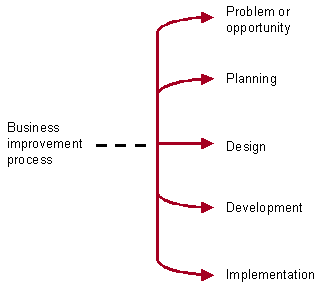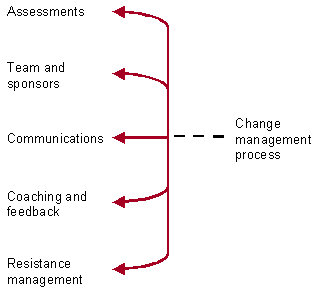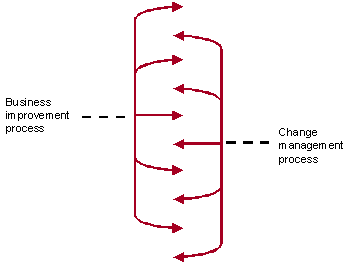Overview of Change Management and Project Management Integration

3 Mins
Updated: August 15, 2022
Published: August 7, 2018

Change management is not an event. It is a process of helping individuals understand, internalize and support a change. The challenge for project teams is to effectively integrate change management with their project management activities.
Change management can be applied to many types of business improvement programs—from radical changes like BPR, mergers and acquisitions or new product releases to incremental changes like continuous improvement processes or Six Sigma. Applying the process and tools for addressing the people side of change involves communications, sponsorship, coaching, training, resistance management and other activities, which must be integrated with the project management plan to be effective.
Learn how to integrate change management with a project you're working on today
when you attend the Prosci Change Management Certification Program
Conceptual Business Improvement and Change Management Processes
To see how integration takes place, we begin by looking at a conceptual picture of a business improvement process and a change management process. Although the pictures below show high-level steps, most business improvement processes (TQM, BPR, Six Sigma, reorganization, etc.) contain the five steps below. Likewise, while the change management process will vary and be more complicated than shown below, these five areas represent some of the major activities of change management.
|
Business improvement process
|
Change management process
|
Your Starting Point Changes What You Do First
If you begin change management when you begin your project, you are able to integrate the change management steps into the project steps. This is shown conceptually below in Scenario 1.
Scenario 1
Integration primarily occurs in one of two ways. First, someone from your team (like you) introduces the importance of change management and the people side of change at the project initiation.
Alternatively, your organization makes a commitment to building change capabilities and uses change management as standard practice on every project. When change management is started at the beginning of a project, the activities can be fully integrated.
Your first step will be to develop a change management strategy based on the characteristics of your particular change and the attributes of your organization that is being changed. Change readiness assessments will help you decide on your strategy and how you will customize the change management plans you are going to develop.
Scenario 2
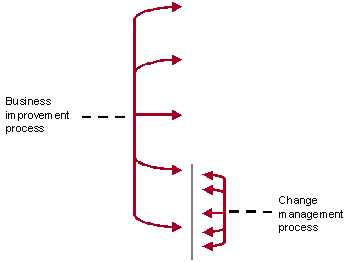 Unfortunately, change management is often added on to a project after it is well underway. The project team may be preparing for implementation or it may have already started, and the catalyst for using change management is resistance from employees, supervisors and managers.
Unfortunately, change management is often added on to a project after it is well underway. The project team may be preparing for implementation or it may have already started, and the catalyst for using change management is resistance from employees, supervisors and managers.
In this situation, your project has already begun to experience difficulties, including productivity declines, resistant behaviors, and possible loss of valued employees—all of which can be prevented or minimized when you integrate change management from the very beginning of a project or initiative.
When adding change management late, your first activity is to find out what has already happened. You must take the pulse of the organization, identify the source of resistance, why it has emerged and manage it effectively and quickly. After you have controlled the damage that is already done, you move into the change management process and develop a strategy for the rest of the project.
Change Management Activities to Integrate
The Prosci 3-Phase Process is a research-based, repeatable and scalable process that guides change practitioners and change teams through the change management approach and activities across three phases.
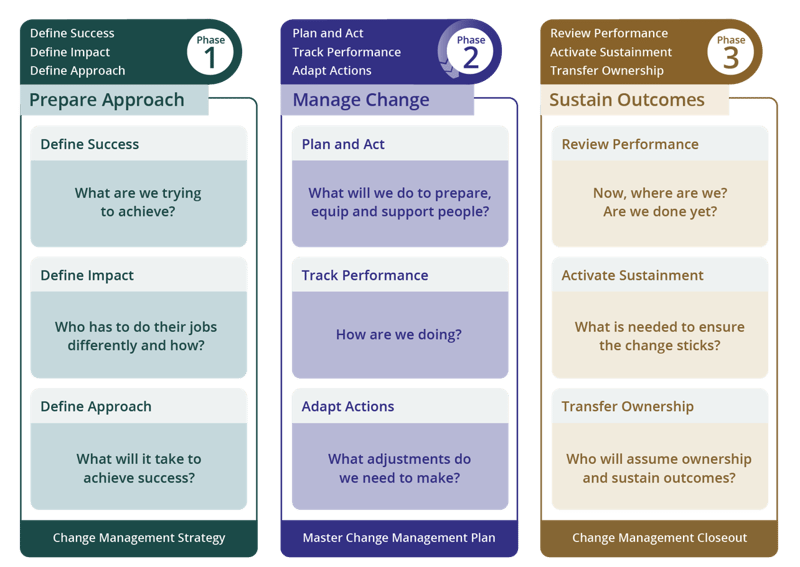
The change management activities to integrate take place across three distinct phases:
Phase 1 – Prepare Approach includes planning activities that culminate in the Change Management Strategy, which informs the activities in Phase 2 – Manage Change. Typical activities include defining success and impacts, completing assessments, anticipating resistance, and defining the overall change management approach for the project or initiative.
Phase 2 – Manage Change is where the bulk of change management takes place and includes actions and activities that culminate in a Master Change Management Plan. These activities include developing specific plans for activating key roles for their responsibilities during change, tracking and measuring performance over time, and adapting actions and activities to ensure that the project or initiative stays on track.
Phase 3 – Sustain Outcomes is all about ensuring that outcomes, such as adoption and usage, can be maintained over time. During this phase, the change team celebrates successes with employees, transfers ownership to the people and teams who will be responsible going forward, and officially ends the change management effort. The final deliverable is the Change Management Closeout.
Integrate Change Management and Project Management
Whether you start change management at project initiation or later in the project lifecycle, integrating change management and project management is critical. Prosci research consistently shows that aligning key phases and activities throughout the project lifecycle improves your likelihood of more successful outcomes and bringing in your projects on time and within budget.

